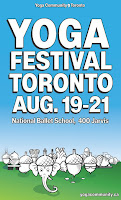Last night, my husband, older son, and I were in the kitchen, cleaning up after dinner. My son, who’s 13 and just starting 8th grade, starting talking about how he’s psyched that his Humanities teacher is OK with him doing his report for “Banned Books Week” on the 1950s classic, On the Road, which he’s been reading on and off since mid-summer.

|
| Illegal photo of OTR scroll via T.Hawk/Flickr |
Given that my son is much more interested in skateboarding and socializing than literature, the parental ears perk up on hearing that there's a book that he’s really enthusiastic about. And so, rather than just going into the standard, yes that’s good dear now just go and do your homework! mode, we got into a really interesting conversation that made me think about what it’s like for him and all the other creative, adventurous kids growing up in a culture that feels gnawingly consumed by competitive pressures, reactionary manipulations, and apocalyptic-tinged fears.
He sums up Jack Kerouac’s road-tripping madness - driving back and forth and back and forth across the country with the iconic Neal Cassady at the wheel, who talks incessantly while driving 90 mph (and this back in the days before interstate highways existed) - with an appreciative: “They were just nuts.”
“And you know what Cassady did when winter came and the windshield iced up?,” he went on. “He'd just roll down his window, stick his head out, and keep driving.”
“Well, that’s ridiculously dangerous!,” I counter in Mom-mode. “Don’t get any ideas.”
But that’s just the obligatory responsible parent reflex. I know what he’s getting at. It was in On the Road, after all, that Kerouac wrote about the people he loved in ways that fired the imagination of the crazy-assed 1960s generation to come:
the only people for me are the mad ones, the ones who are mad to live, mad to talk, mad to be saved, desirous of everything at the same time, the ones who never yawn or say a commonplace thing, but burn, burn, burn like fabulous yellow roman candles exploding like spiders across the stars and in the middle you see the blue centerlight pop and everybody goes 'Awww!'
And yeah, growing up at a time when well-meaning parents feel that if they want their kids to “get ahead” and avoid the fate of a dead-end, low-paying service sector job, they'd better get them into a competitive preschool, have them doing homework in kindergarten, and make sure they keep going nonstop from there – of course you might wonder, as my son did: “Whatever happened to all that crazy stuff that used to be go down? Because there’s nothing like that today.”

|
| Ken Kesey & the Merry Pranksters |
My husband and I said . . . well, you know, back when society was way more traditional and straight-laced than today, there used to be this belief that if you could just break free of the soul-killing constraints of modern society, then you’d be free to fully experience life – full of passion, authenticity, creativity, art, and socially defiant meaning.
On the Road was one iconic text of this much larger movement, which reached its apotheosis in the cultural revolutions of the 1960s-70s.
“But then, when we finally did tear down all these traditions, a lot of people just crashed and burned."
The hippies, who succeeded the Beat movement which Kerouac symbolized, assumed that liberation automatically generated joy. The next generation of counter-cultural artists, however, was personified by the brilliant, suicidal Kurt Cobain.

|
| Kurt Cobain "mock memorial," Seattle |
And Kerouac himself died of alcoholism at 47 in 1969.
“So, no one can really believe all that anymore,” added my husband. (This is what it’s like having two political science professors as parents.) “We have these incredibly creative writers who are brilliant social critics, like David Foster Wallace, but there's an underlying despair.”
Although of course, there's something oh-so-late-20th-century about being so concerned with, let alone despairing over our seeming inability to experience authenticity and meaning. In 2011, it doesn't seem so cool to care so much. Plus there this (in my mind, misguided) sense that we don't have the luxury - "in these tough economic times" - of grappling with the big questions, anyway.
Although of course, there's something oh-so-late-20th-century about being so concerned with, let alone despairing over our seeming inability to experience authenticity and meaning. In 2011, it doesn't seem so cool to care so much. Plus there this (in my mind, misguided) sense that we don't have the luxury - "in these tough economic times" - of grappling with the big questions, anyway.
But not in yoga – right?
While the modernist avant-garde believed it was possible to reject conventional values and seize authentic experience, the post-modern writer finds himself stranded in endless simulacra. He can respond with irony and/or despair. But there's an apprehension that we've become irretrievably lost in the meaningless hall of mirrors that constitutes contemporary consumer culture.
But - this represents only the (rather hyper self-conscious) worldview of what’s in fact a tiny minority of artists, intellectuals, and others who’re deeply unhappy about the state of our society and share a more-or-less coherent explanation of why we are where we are. I’m pretty familiar with at least certain parts of that worldview, and find a lot of it quite compelling.
But, now that I’m so immersed in yoga culture, I’m also quite aware that what I’ve been writing about in this post so far represents a perspective that most practitioners don’t share – at all.
On the contrary, contemporary yoga is suffused with the language of “finding your true self.” Post-modern despair over the impossibility of authentic experience is completely alien to yoga culture – at least, that is, on any self-conscious, explicitly stated level.
I believe, however, that one of the biggest reasons that yoga’s become so popular is precisely because it claims to offer a direct route to discovering a deep sense of authenticity by tapping into your “true self” – an experience of self which most people lack, but deeply crave.
This promise of “finding your true self” resonates so deeply precisely because we live in a culture that makes it extremely difficult to develop an organic, rooted, vital sense of oneself.
Yoga also promises to deliver something like that sense of overflowing, life-affirming energy that Kerouac’s riff on "those fabulous yellow roman candles" evokes. And again, that’s something that’s relatively difficult to find in most of our culture today.
In other words, whether we realize it or not, a big reason that yoga’s so popular is that it offers an antidote to post-modern despair.
If that’s true, then the gazillion dollar question (irony intended) is: Can yoga really deliver?
If you're interested, you can read my companion post, "Yoga and the Commodification of the True Self," over at Elephant Journal.




